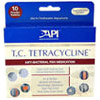Indications
Clindamycin is an antibiotic medication recommended for the treatment of various bacterial infections. This includes infections of the lungs, skin, blood, female reproductive organs, and internal organs. It operates under the class of lincosamide antibiotics and functions by stopping the growth of bacteria. Clindamycin is not efficacious against viral infections such as the common cold or flu.
Usage Guidance
This medication is typically administered orally in capsule form, or via injection when more serious infections need to be treated swiftly or when the patient is unable to take the oral form. For optimal efficacy, it’s important to follow the prescribed regimen closely, taking the medication at equally spaced intervals to maintain steady levels in the bloodstream.
Dosage
The precise dosage of Clindamycin will be determined by the treating physician and is contingent on several factors, including infection severity, patient weight, and kidney function. Generally, adults may be prescribed 150 to 450 mg taken every 6 to 8 hours. For children, the dosage is typically calculated based on body weight. It is crucial to continue the medication for the full prescribed duration, even if symptoms recede swiftly, to prevent the spread of antibiotic-resistant bacteria.
Contraindications
Clindamycin is contraindicated in individuals with a known hypersensitivity to the medication or any of its components. Moreover, it should be avoided in patients with a history of gastrointestinal disease, particularly colitis. Using this medication inappropriately can lead to severe, even fatal, intestinal issues.
Warnings
–Caution is mandated due to the potential link between clindamycin use and Clostridium difficile-associated diarrhea, which may range from mild diarrhea to fatal colitis.–
–Warnings also encompass potential severe allergic reactions. Always inform your healthcare provider of any allergies before beginning this medication.–
–It is further suggested that clindamycin may pass into breast milk, thereby advising caution for nursing mothers.–
Adverse Effects
The catalogue of potential unwelcome effects from clindamycin is extensive. Commonly, patients could experience gastrointestinal distress such as nausea, vomiting, or diarrhea. It’s worth acknowledging too that some individuals may endure more severe adverse effects, like an overgrowth of resistant bacteria or severe skin reactions. Abdominal pain and jaundice could also denote a liver issue, mandating immediate medical attention.
Drug Synergy
When combined with certain other pharmaceuticals, the likelihood of clindamycin inducing unfavorable outcomes increases: neuromuscular-blocking drugs, erythromycin, or vitamins/minerals. Therefore, it is of the essence to have a comprehensive dialogue with healthcare providers regarding all consumed substances, including prescription, non-prescription, and herbal products.
Preventative Measures
Prior to initiating therapy, a thorough medical history should be reviewed. This should encompass mention of liver maladies, renal conditions, or intestinal diseases like colitis. Should diarrhea occur during treatment, an immediate consultation with the physician is recommended. Exposure to sunlight or tanning beds should be avoided since clindamycin could increase sunburn susceptibility.
Pharmacological Profile
Understanding its mechanics, Clindamycin operates by preventing the production of essential proteins needed by bacteria to survive. Its effectiveness spans a gamut of bacterial strains and it is absorbed rapidly from the digestive system when taken orally. The body distributes it widely, excluding the central nervous system.
Clinical Investigations
Clindamycin’s efficacy has been scrutinized via numerous investigations that have demonstrated its benefits and limitations. Studies have highlighted its effectiveness against specific bacteria, the appropriate modalities for administration, and the patient categories that may achieve the optimal outcomes using this medication.
Overdose Protocol
In the event of an overdose, medical help is imperative. Symptoms may include severe nausea, vomiting, or diarrhea. Should an overdose be suspected, the local poison control center or emergency room ought to be contacted immediately. It’s necessary to note that supportive measures are the primary approach to treatment in such circumstances, as there is no specific antidote for clindamycin overdose.
Product Info
Clindamycin is supplied in various forms: oral capsules, topical solutions, injectable solutions, and more. Each mode of delivery is tailored to specific types of infections and treatment scenarios.
Storage Details
Storing clindamycin properly is crucial in maintaining its efficacy. Oral and topical forms should be kept at room temperature away from moisture and light. Injectable solutions may have different storage requirements; consulting the product’s labeling or a pharmacist is advised for precise storage conditions. Never keep expired medications, and always discard them following safe disposal guidelines to prevent accidental ingestion by children, pets, or contamination of water sources.






Reviews
There are no reviews yet.